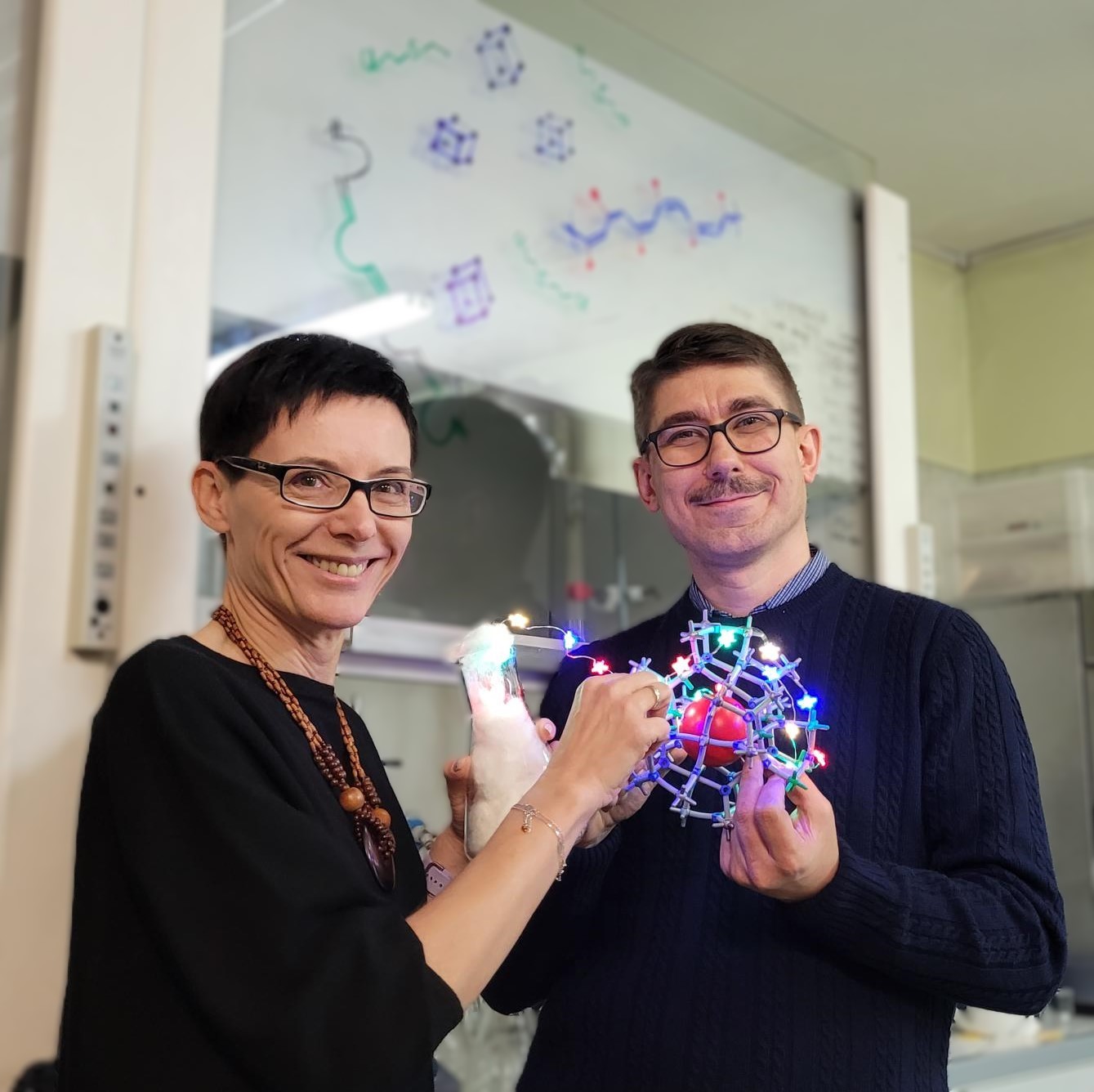
Chemistry and chemical pollution
The researchers hope that the results of this project will contribute to the development of new devices which will allow for an effective combat with chemical pollution of the environment. A project in collaboration of University of Wrocław with Adam Mickiewicz University in Poznań will be funded by NCN, as part of Opus contest an amount of PLN 2 245 044 was allocated for the project.
„Nowe sieci hybrydowe typu MOP-polimer i MOF-polimer jako efektywne materiały do neutralizacji substancji toksycznych (eng.Novel MOP-polymer and MOF-polymer hybrid networks as effective materials for destruction of toxic pollutants)” – a project led by dr hab. inż. Wojciech Bury of the Institute of Chemistry of the University of Wrocław.
Where does the idea for the project come from?
Dr hab. inż. Wojciech Bury, prof. UWr, project director: ― Increasing world population forces the use of chemicals on a massive scale, for example in agriculture, which has huge impact on our health. Moreover, the emission of toxic pollution into the atmosphere, i.e. by-products of many chemical processes (e.g. combustion), poses a true danger to the natural environment. Because of that we are researching i.e. new technologies in purification of air, water, and soil in order to capture harmful gasses and volatile organic compounds (VOCs), and neutralise them to substances less harmful to the environment and humans. It is crucial to develop light materials suitable for creation of personal protective equipment i.e. clothing which can swiftly neutralise toxic pollutants.
Is it possible to combine two materials of different properties?
― Scientists constantly work on developing new compositions and hybrids that would combine desired properties of different materials. In our project we devised a new strategy of obtaining porous hybrid materials MOF-polymer. The focus of our research will be volatile organic compounds, which are considered to be the main group of substances polluting the air and contributing to formation of smog, which leads to adverse consequences to our health. Especially harmful are substances of LZO type, so called chemical warfare agents (CWAs). Although their prohibition in 1997 in The Chemical Weapons Convention, they are easily accessible for terrorists or authoritarian governments, which poses a worldwide danger.
That are MOF-polymer hybrids and how do they work?
― In the project we want to permanently combine two groups of materials, MOF and organic polymers. MOF (metal-organic frameworks) materials contain in their built free spaces that are responsible for absorption of particles, which resemble soaking a regular sponge with water. [1] In our case, porous MOF material is tasked with setting and neutralising particular chemical substances in liquid or gas form. In turn, the other element – the organic polymer is to aid and secure the structure of MOF material through strong setting of two components and presence of certain functions that we can design in the polymer. Processability of the hybrid material is also crucial for the material to be utilised in different forms (fabric, monolith, etc.)
Which polymers are being referred to?
Dr hab. Izabela Czeluśniak, the main project contractor and an expert in chemistry of polymers: ― We will utilise highly programmable polymers and copolymers obtained from monomers containing norbornene and acetylene, which can be polymerised in a strictly controlled way. Of many types of polymeric materials we chose two – polyacetylene and polynorbornene. The former is obtainable as a result of polymerization of alkenes. The latter can be obtained in ring-opening metathesis polymerization (ROMP) of cyclic olefins. The choice of these polymers was not accidental. Polyacetylenes and polynorbornenes have a similar built consisting of single and double bond carbon – carbon, which together with correct substituents in bonds results in wide spectrum of unique properties such as electrical conductivity, nonlinear optical properties, gas permeability, electroluminescent properties etc. Aforementioned methods allow for synthesis of polymers of desired properties in a controlled manner due to wide range of commercially available catalysts. As trivia let’s add that curious properties of polyacetylenes and considerable potential of metathesis were not only noticed by the scientists, but also honoured by the Nobel committee (Alan J. Heeger, Alan G. MacDiarmid, and Hideki Shirakawa in 2000, and Yves Chauvin, Robert H. Grubbs, and Richard R. Schrock in 2005).
Opus 27 competition has been announced in March 2024 and it was settled on 4th of December 2024. Funds from OPUS will go to 12 researchers of the University of Wrocław.
OPUS is a contest of many opportunities, in which people of every stage of academic career, regardless of age and level of experience, can apply for project funding. Thanks to OPUS grant it’s possible to build sizeable research teams, implement projects which require the usage of international research equipment, and also establish collaborations with foreign partners.
Who received NCN grants in December:
[1] M. Pander, N. Skałecka, J. Prus, O. Stani, W. Bury, Wiadomości Chemiczne, 2024, 78, 1697-1729, DOI: 10.53584/wiadchem.2024.11.13.
Translated by Nergis Dogan (student of English Studies at the University of Wrocław) as part of the translation practice.
complied by kg
Date of publication: 19.12.2024
Added by: M.J.



